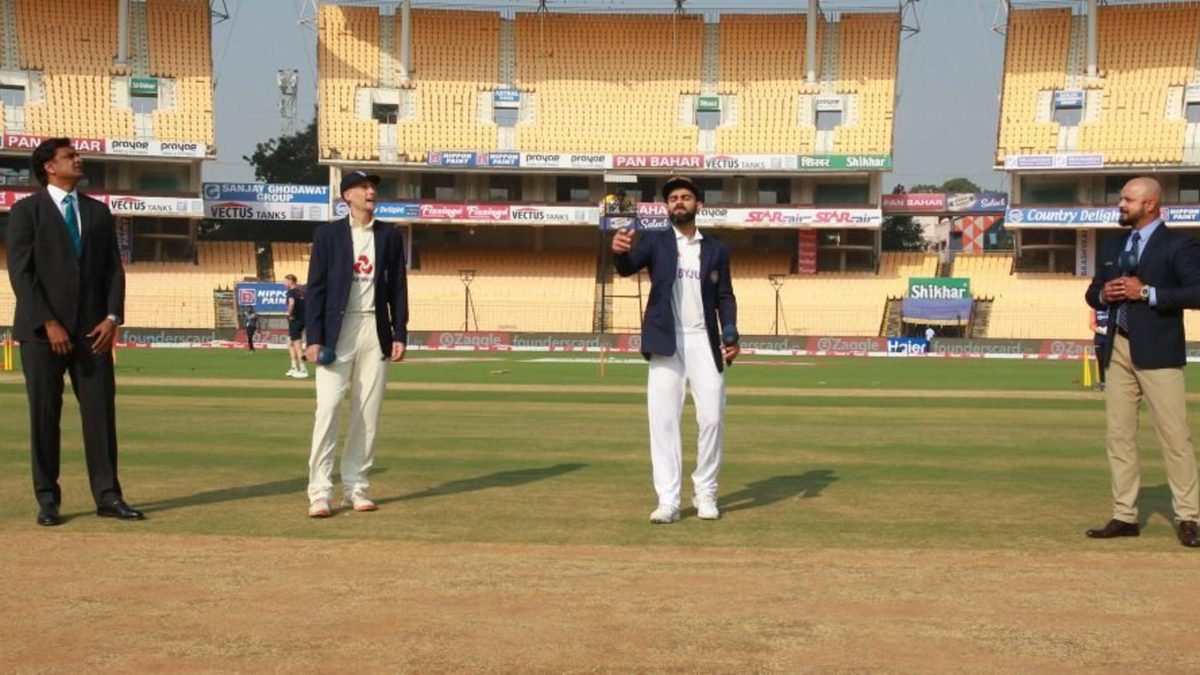
Criticism against the Chennai pitch after England’s loss against India in the second Test was loud and persistent.
With spinners continuing to dominate in the third game at Motera and the match set to end within two days, questions about the surface will be raised again.
Some experts have sparked the debate already. Indian sports journalist Narottam Puri said, “Surprised no one has questioned the sad state of the pitch at a magnificent stadium. If a Test ends in 2 days it is a clear indictment of a terrible pitch for Tests. This is a bad advertisement for a Test pitch.”
The ICC Pitch and Outfield Monitoring Process is available on the ICC website and explains what ‘poor’ means:
“A Poor pitch is one that does not allow an even contest between bat and ball,” it says, “either by favouring the batters too much, and not giving the bowlers (seam and spin) from either team sufficient opportunity to take wickets, or by favouring the bowlers too much (seam or spin), and not giving the batters from either team the opportunity to make runs.”
It goes on to add that a pitch may be rated “poor” if “the pitch offers excessive assistance to spin bowlers, especially early in the match,” before adding some clarifications of varying usefulness.
The first points out “Excessive means ‘too much’.” The third suggests leeway can be found for pitches in Asia if they spin early.
“It is acceptable for a pitch to offer some degree of turn on the first day of a match, particularly in the sub-continent,” it says, “though anything more than occasional unevenness of bounce at this stage of the match is not acceptable. It is to be expected that a pitch will turn steadily more as a match progresses, and it is recognised that a greater degree of unevenness of bounce may develop.”
Hence, there cannot be a definite consensus on the ‘poor’ definition of a specific pitch. Spin bowlers picked up 28 wickets across the first three innings, with just Jofra Archer and Ishant Sharma representing the seamers with one wicket apiece. The pitch assisted the spinners to such a degree that Joe Root broke the record for the most economical Test five-for in India, Axar Patel accounted for 10 wickets in his second game and Ben Stokes was seen practising his off-spin.
R Ashwin had become just the third spinner to claim a wicket off the first ball of a Test innings in the second Test. On Thursday, Patel became the fourth.
An international pitch being rated ‘poor’ is a rare occurrence across formats and hasn’t happened since 2018. The ICC website mistakenly notes The Wanderers Test between India and South Africa as having taken place in 2019, when it actually occurred in 2018. That pitch was rated ‘poor’ for “excessively steep and unpredictable bounce‚ and excessive seam movement”, with the game halted on the third evening due to the dangerous nature on the surface, before resuming on day four for India to wrap up victory by 63 runs.
Dr Narottam Puri: Surprised no one has questioned the sad state of the pitch at a magnificent stadium. If a Test ends in 2 days it is a clear indictment of a terrible pitch for Test. This is “Bad advertisement for Test pitch.” No Test should end in two days, he emphasizes !
— Vijay Lokapally (@vijaylokapally) February 25, 2021
More relevant is another ‘poor’ rating in 2017 for another Test pitch involving India, at Pune against Australia. On that occasion, Australia made 260 and 285, while India were bowled out for 105 and 107, with Steve O’Keefe taking identical figures of 6-35 in both innings. Notably, that Test included success for the seamers, with Umesh Yadav taking 4-32 in the first innings, and a spectacular individual innings, with Steve Smith’s third-innings 109 rated Wisden’s Test innings of 2017.
If a pitch is rated ‘poor’, a venue receives three demerit points. Should a venue accumulate five demerit points in a rolling five-year period, it will be banned on hosting international cricket for a year.








